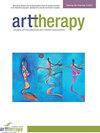Introduction to the Special Issue – Resilience and Transformation: Reflections on 2020
IF 1.3
Q3 PSYCHOLOGY, CLINICAL
引用次数: 0
Abstract
“Be safe” When facilitating an open art therapy studio at a drop-in center for runaway and unhoused young people in Washington D.C., each time someone leaves for the day, we seldom say “goodbye” or “see you later.” Instead, everyone calls out “Be safe.” There’s “be safe” because the streets are rarely secure and the same with some shelters. Even those who are housed navigate constant job searches and food insecurity. During the cold winter months and excruciating summer heat, these realities intensify. There’s “be safe” because there is vulnerability in being young Black and Brown women and men in a racist society. That exposure increases for young people who identify as lesbian, gay, bisexual – and further increases for those who are transgender and gender nonconforming. Youth with psychological trauma, learning and other disabilities face even more difficulties. I have always thanked youth and staff for their well wishes that I also remain safe. For the most part, it only serves to highlight what I already know – that my White skin and my cisgender male identity insulate me from the harassment they receive and systemic obstacles they regularly encounter. This caring phrase also reminds me how I am selectively able to reveal my gay, Jewish, and other invisible identities. And at this point in my life, I am assured with housing and food, which furthers another divide. From March 2020 and since, “be safe” took on additional meanings that started to narrow the gap among our differences. At first, it meant, stay healthy. Do what you can to stay COVID-free. For the young people that I work with, this is no easy task when transitory housing limits social distancing options, the majority of jobs available are those with the highest risk of exposure, and healthcare evidenced underlying deficiencies. As the health pandemic intensified, an endemic condition in the U.S. showed itself – racism and discrimination. There were racial and socioeconomic health disparities (Centers for Disease Control and Prevention, 2021). Asians and Asian Americans were targeted as perpetrators of the virus, as online hate speech became physical violence (Ong, 2021). In the summer, the murder of George Floyd, soon after the high-profile deaths of Ahmaud Arbery and Breonna Taylor, led to the rise of Black Lives Matter demonstrations across the country and around the globe. For clients, “be safe” meant advocating for them to raise their voices while identifying safeguards as their skin color made them targets for roving gangs of White nationalists, neo-Nazis, and fascists who came to Washington D.C. looking for banners to burn and people to beat (Jackman et al., 2020). Even the measures meant to keep the city secure, such as heightened police and military presence, actually did little to make the youth feel protected. As the year came to a close, “be safe” recalled government stability. The heated U.S. Presidential Election exasperated political discord that threatened U.S. democracy, which culminated soon after 2020 ended with an insurrection at the U.S. Capitol. Although these three threats – health, discrimination, governance – impacted disproportionately based on racial and socioeconomic positions, most everyone had to come to a new understanding of safety. At the pandemic’s onset, art therapists began sharing strategies for sanitation and hygiene as well as meeting with clients and educating students virtually. As the public health challenges merged with racial injustices, art therapists also began to investigate their roles in perpetuating inequitable systems and how to rectify them. The documented expressions of hardship and suffering also brought forth examples of resilience and transformation as individuals and agencies adapted and found meaning from the current moment (Burke-Garcia et al., 2021). Some have referred to these ways of working as the new normal that separates the before pandemic times from the current aftermath. It is doubtful that there has ever been such a thing as a normal approach to art therapy. What is becoming clear is that normal art therapy is responsive based on client needs, cultural values, racialsocial-cultural oppression, contextual factors, and treatment expectations of helping and art making.特刊导言-韧性与转型:对2020年的思考
“注意安全”在华盛顿特区的一个收容中心为离家出走和无家可归的年轻人提供开放的艺术治疗工作室时,每次有人离开,我们很少说“再见”或“再见”。相反,每个人都在喊“注意安全”。有“要安全”,因为街道很少安全,一些避难所也是如此。即使是那些有住房的人也在不断地找工作和粮食不安全。在寒冷的冬季和酷热的夏季,这些现实更加严重。之所以说“要安全”,是因为在一个种族主义社会中,年轻的黑人和棕色人种男女都很容易受到伤害。对于同性恋和双性恋的年轻人来说,这一风险增加了,而对于变性人和性别不一致的人来说,这一风险进一步增加。有心理创伤、学习和其他障碍的青年面临的困难更大。我一直感谢年轻人和工作人员对我也保持安全的祝福。在很大程度上,这只是为了强调我已经知道的事情——我的白皮肤和我的顺性别男性身份使我免受她们经常受到的骚扰和系统性障碍的影响。这句关怀的话也提醒了我,我是如何有选择地暴露我的同性恋、犹太人和其他看不见的身份的。在我生命的这个阶段,我有住房和食物,这进一步加剧了另一种分歧。从2020年3月起,“安全”被赋予了更多的含义,这开始缩小我们之间的分歧。起初,它的意思是保持健康。尽你所能远离covid - 19。对于与我一起工作的年轻人来说,这不是一件容易的事,因为临时住房限制了社交距离的选择,大多数可用的工作都是那些暴露风险最高的工作,而且医疗保健证明了潜在的缺陷。随着疫情的加剧,美国出现了一种地方病——种族主义和歧视。存在种族和社会经济健康差异(疾病控制和预防中心,2021年)。亚洲人和亚裔美国人成为该病毒的肇事者,因为在线仇恨言论变成了身体暴力(Ong, 2021)。今年夏天,在阿莫德·阿贝里和布里奥娜·泰勒备受瞩目的死亡事件发生后不久,乔治·弗洛伊德被谋杀,导致全国乃至全球范围内“黑人的命也是命”示威活动的兴起。对于客户来说,“安全”意味着提倡他们提高自己的声音,同时确定保护措施,因为他们的肤色使他们成为白人民族主义者、新纳粹分子和法西斯分子的目标,这些人来到华盛顿特区寻找可以焚烧的横幅和可以殴打的人(Jackman et al., 2020)。即使是为了维护城市安全而采取的措施,比如加强警力和军事部署,实际上也无助于让年轻人感到受到保护。随着这一年的结束,“要安全”唤起了政府的稳定。激烈的美国总统选举加剧了威胁美国民主主义的政治分歧,这种分歧在2020年之后不久以美国国会大厦的叛乱而告终。尽管这三种威胁——健康、歧视和治理——对种族和社会经济地位的影响不成比例,但大多数人都必须对安全有新的认识。在大流行开始时,艺术治疗师开始分享环境卫生和个人卫生的策略,以及与客户会面和虚拟教育学生。随着公共卫生挑战与种族不公正的融合,艺术治疗师也开始调查他们在使不公平制度永久化中的角色,以及如何纠正它们。记录在案的艰苦和痛苦的表达也提供了个体和机构适应并从当前时刻找到意义的复原力和转变的例子(Burke-Garcia等人,2021)。一些人将这些工作方式称为新常态,将大流行之前的时期与当前的疫情后时期区分开来。令人怀疑的是,是否曾经有过一种艺术治疗的正常方法。越来越清楚的是,正常的艺术治疗是基于客户需求、文化价值观、种族社会文化压迫、背景因素以及对帮助和艺术创作的治疗期望的。
本文章由计算机程序翻译,如有差异,请以英文原文为准。
求助全文
约1分钟内获得全文
求助全文

 求助内容:
求助内容: 应助结果提醒方式:
应助结果提醒方式:


